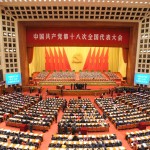
[IN CHINESE] Zhang Tuosheng discusses China’s national interests, especially China’s core interests as articul…

[IN CHINESE] Zhang Tuosheng discusses China’s national interests, especially China’s core interests as articul…
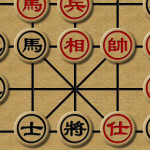
This is the second in a three part series of articles from Professor Zhang Tuosheng of the China Foundation fo…
This report by Neil Chapman “provides a review of the status of international research and policy on the use of very deep boreholes (several kilometres in depth) for the disposal of radioactive wastes.” While reviewing numerous studies on deep borehole disposal of spent fuel, HLW and other radioactive wastes, Chapman finds that “a key gap continues to be a comprehensive operational and post-closure safety assessment of DBD.” He also finds that “the lack of full-scale trials of certain aspects of the technology (not necessarily at envisaged disposal depths) is holding up further development.”
Professor Neil Chapman is a senior scientist with 35 years’ experience in the scientific and strategic aspects of deep and shallow disposal of radioactive wastes, including provision of advice at the highest level to industrial and governmental organisations.
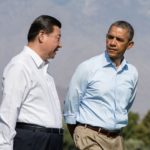
[IN CHINESE] Zhang Tuosheng discusses China’s national interests, especially China’s core interests as articul…
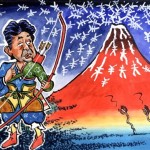
This article describes the impressive, resilience-targeted greening of Japan, evident in nationwide deployments of renewable energy, radical efficiency, and other core aspects of sustainability. These developments are already underway, and include public- and private-sector actors as well as community groups. The greening also has promising stamina due to being increasingly deeply inscribed in the fiscal, regulatory and other mechanisms of a rapidly emergent industrial policy.
Andrew DeWit is Professor in the School of Policy Studies at Rikkyo University and an Asia-Pacific Journal coordinator. With Iida Tetsunari and Kaneko Masaru, he is coauthor of “Fukushima and the Political Economy of Power Policy in Japan,” in Jeff Kingston (ed.) Natural Disaster and Nuclear Crisis in Japan.
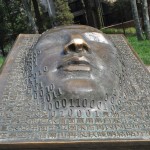
[Chinese Version] In this Special Report Senior Colonel (Retired) Fan Gaoyue argues that the …

[English Version] In this Special Report Senior Colonel (Retired) Fan Gaoyue argues that the …
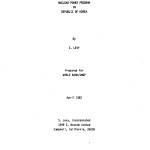
Recent probes have unveiled irregularities involving a parts supplier to Korea Hydro and Nuclear Power Co., the state-run operator of the nation’s nuclear plants. Products were certified for use despite failing to meet quality standards and the revelation led to four nuclear reactors being shut down.
Concerns about the safety of South Korea’s nuclear plants have been long-standing, as the following report, prepared for the World Bank and UNDP in April of 1982, outlines. The findings of the 1982 review of the ROK’s regulatory aspects and operational safety of nuclear power plants were concerning, with the principal conclusions stating that it is “essential and urgent that there exist in the Republic of Korea a strong, independent and competent nuclear regulatory function as well as associated Korean safety laws, regulation, criteria, codes and standards.” It further state that “it is important to recognize that, by contrast to oil and coal power plants, operating nuclear power plants require continued upgrading in personnel training, equipment, and operational safety bases…”
This report was obtained by the Nautilus Institute under the Freedom of Information Act. Please click here to view other documents obtained through FOIA.

Andrew Dewit discusses Japan’s plans to build the world’s largest offshore wind farm near Fukushima as part of plans to reconstruct the area stricken by nuclear disaster in 2011. He writes “that if one looks closely at Fukushima, as well as Japan’s subnational governments in general, one finds plenty of political will and concrete action. This comes as something of a surprise, to be frank, as the general narrative on Japan and its power holders has been that the dominance of the nuclear-favouring Abe regime means the decline of the pro-renewable and anti-nuclear movement spawned by Fukushima. The evidence suggests, however, that Japanese power policy and politics is becoming decentralized and distributed.”
Andrew Dewit is Professor in the School of Policy Studies at Rikkyo University and an Asia-Pacific Journal coordinator.
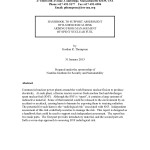
Commercial nuclear power plants around the world harness nuclear fission to produce electricity. At each plant, a fission reactor receives fresh nuclear fuel and discharges spent nuclear fuel (SNF). Although the SNF is “spent”, it contains a large amount of radioactive material. Some of that material could be released to the environment by an accident or an attack, causing harm to humans by exposing them to ionizing radiation. The potential for such harm is the “radiological risk” associated with SNF. Independent assessment of this risk could help societies to manage the risk. This report is designed as a handbook that could be used to support such independent assessment. The report has two main parts. The first part provides introductory material, and the second part sets forth a seven-step approach to assessing SNF radiological risk.
Gordon D. Thompson, Phil., is currently the executive director of Institute for Resource and Security Studies in Cambridge, MA. In addition, he serves as Research Professor, George Perkins Marsh Institute, Clark University, Worcester, Massachussetts.
This handbook was produced for of the Institute’s Resilience and Security of Spent Fuel in East Asia project with the support of the John T. and Catherine D. MacArthur Foundation.